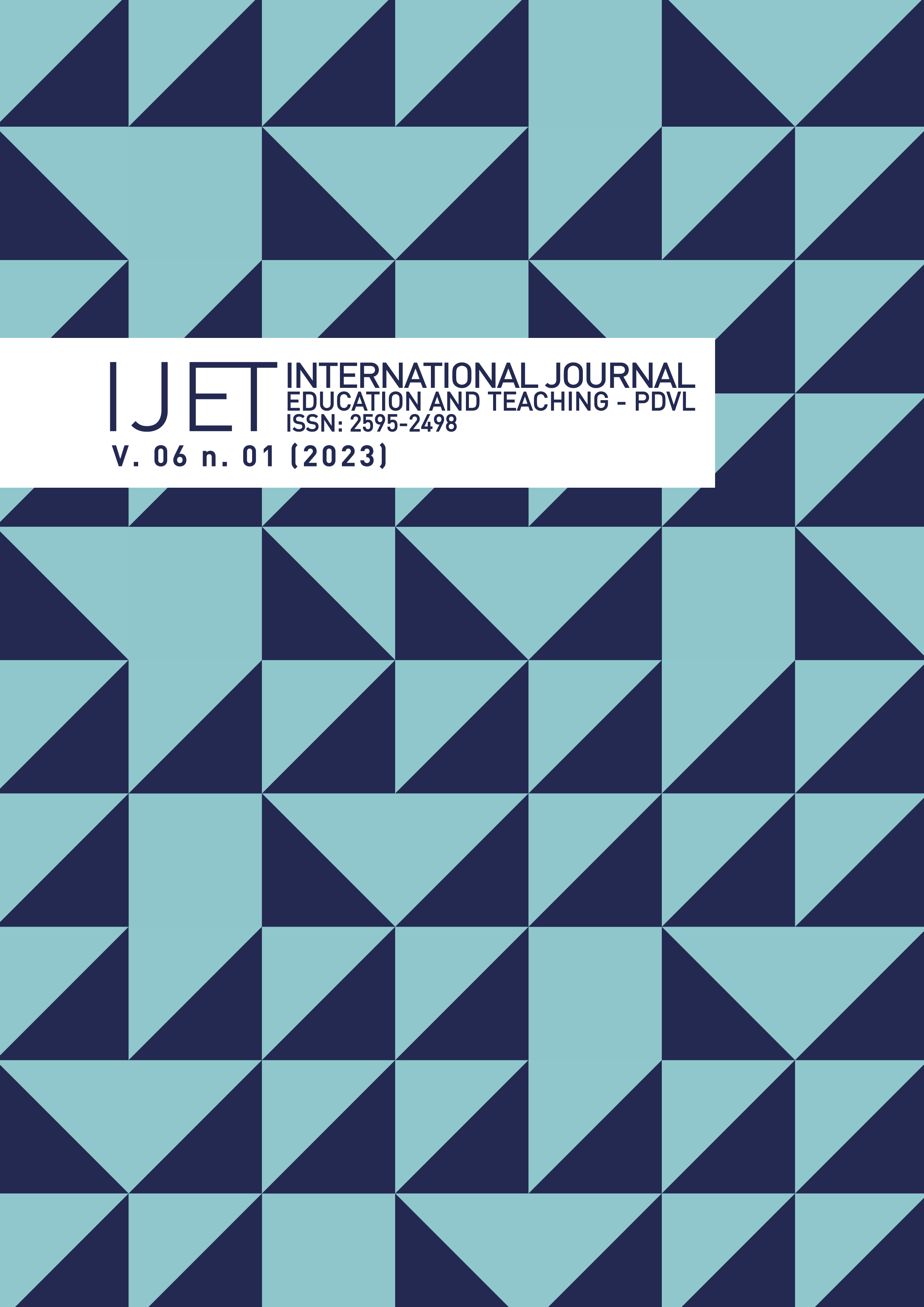THEATRICAL BOX: EXPLAINING THE HISTORY OF THE EARTH IN 10 MINUTES
DOI:
https://doi.org/10.31692/ijetpdvl.v6i2.256Keywords:
modelo didático, evolução, Biologia, ensino médioAbstract
The present work aimed to make a didactic
model called Caixa Teatral, related to the
transformations of the primitive Earth for
the development of life, and to evaluate it
from the perspective of undergraduates in
Biological Sciences. Planet Earth was a
hostile place that did not allow the existence
of life forms, from billions of years of
transformations it was possible for life to
arise. In this way, it is necessary to
understand these processes, however,
because they are contents marked by
different theories and approaches, students
may have difficulties in their learning. The
use of didactic models as teaching-learning
tools allows the conduction of subjects in
the classroom in a practical, playful and
illustrative way. Therefore, the National
Curricular Common Base provides for the
construction of knowledge about the
transformations of the primitive Earth for
the development of life within the theme
Life, Earth and Cosmos. In this sense, from
the creation of the didactic model “Caixa
Teatral” it was presented to undergraduate
students of Biological Sciences to
demonstrate its use in teaching the contents
of Earth's evolution and emergence of life.
Subsequently, a questionnaire was applied
to assess the perception of future teaching
professionals about the exposed didactic
model. Through it, it was possible to
identify the profile of these students, to
know the way in which the teaching of the
contents worked in Caixa Teatral took place
during the high school of these students and
to acquire the evaluation of the didactic
model from the perspective of the
licentiates. Therefore, it was possible to
perceive that non-traditional methods
enable effective education, with Caixa
Teatral being a cheap, applicable and
efficient teaching tool.
Downloads
References
AMABIS, José Mariano; MARTHO, Gilberto Rodrigues. Biologia Moderna. 1. ed. São Paulo: Moderna, 2016.
BRASIL. Ministério da Educação. Base Nacional Comum Curricular. Brasília, 2018.
DANTAS, A. P. J.; DANTAS, T. A. V.; FARIAS, M. I. R.; SILVA, R. P.; COSTA, N. P. Importância do uso de modelos didáticos no ensino de citologia. In: Congresso Nacional de Educação. 2016.
DE LIMA, D. B.; GARCIA, R. N. Uma investigação sobre a importância das aulas práticas de Biologia no Ensino Médio. Cadernos do Aplicação, Porto Alegre, v. 24, n. 1, 2011.
FONTELLES, Mauro José et al. Metodologia da pesquisa científica: diretrizes para a elaboração de um protocolo de pesquisa. Revista paraense de medicina, v. 23, n. 3, p. 1-8, 2009.
KRASILCHIK, M. Prática de ensino de Biologia. São Paulo: Universidade de São Paulo, 2004.
MULLER, S.M; GUIMARÃES, L.P O estudo abordou como estratégia de ensino a origem da vida no ensino médio. Pesquisa, Sociedade e Desenvolvimento , [S. l.] , v. 9, n. 2, pág. e76922071, 2019.
NICOLA, Jéssica Anese; PANIZ, Catiane Mazocco. A importância da utilização de diferentes recursos didáticos no ensino de biologia. Infor, Inov. Form., Rev. NEaD-Unesp, São Paulo, v. 2, n. 1, p.355-381, 2016.
NICOLINI, Livia Baptista; FALCÃO, Eliane Brígida Morais; FARIA, Flavio Silva. Origem da vida: como licenciandos em Ciências Biológicas lidam com este tema?. Ciência & Educação, Bauru, v. 16, n. 2, 2010.
ORLANDO, Tereza Cristina et al. Planejamento, montagem e aplicação de modelos didáticos para abordagem de biologia celular e molecular no ensino médio por graduandos de ciências biológicas. Revista de Ensino de Bioquímica, v. 7, n. 1, p. 1-17, 2009.
PEROVANO, L. P., PONTARA, A. B., & MENDES, A. N. F. Dominó Inorgânico: uma forma inclusiva e lúdica para ensino de Química. Revista Conhecimento Online, 2, 37–50, 2017.
VIEIRA, V. J. da C., & CORRÊA, M. J. P. O uso de recursos didáticos como alternativa no ensino de Botânica. Revista De Ensino De Biologia Da SBEnBio, 13(2), 309-327, 2020.







